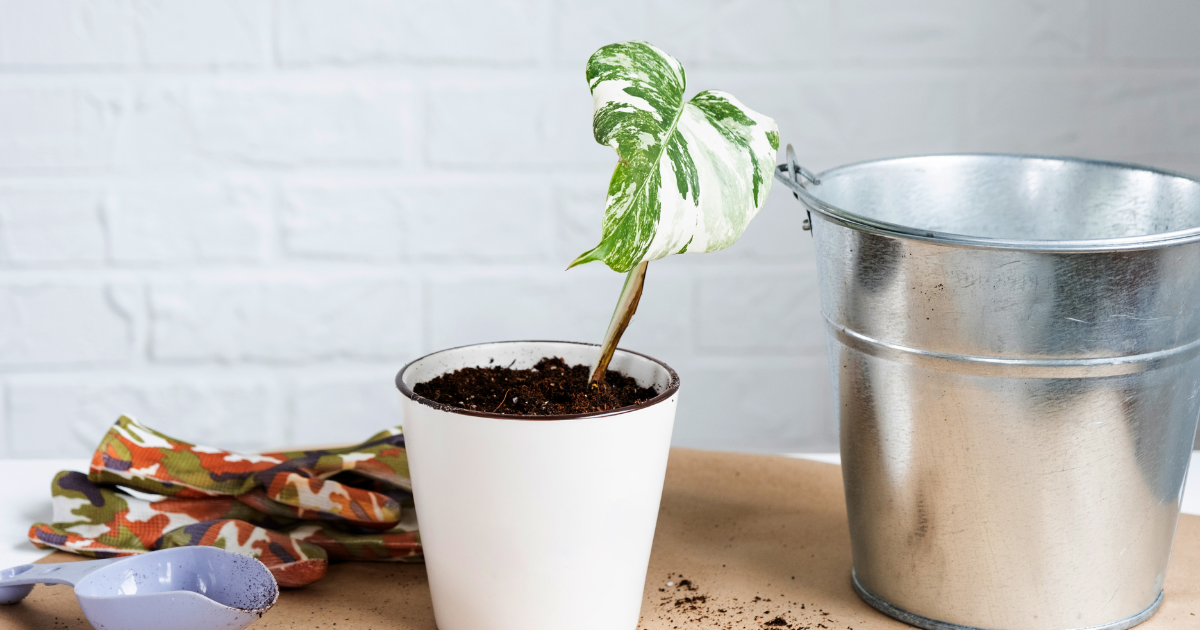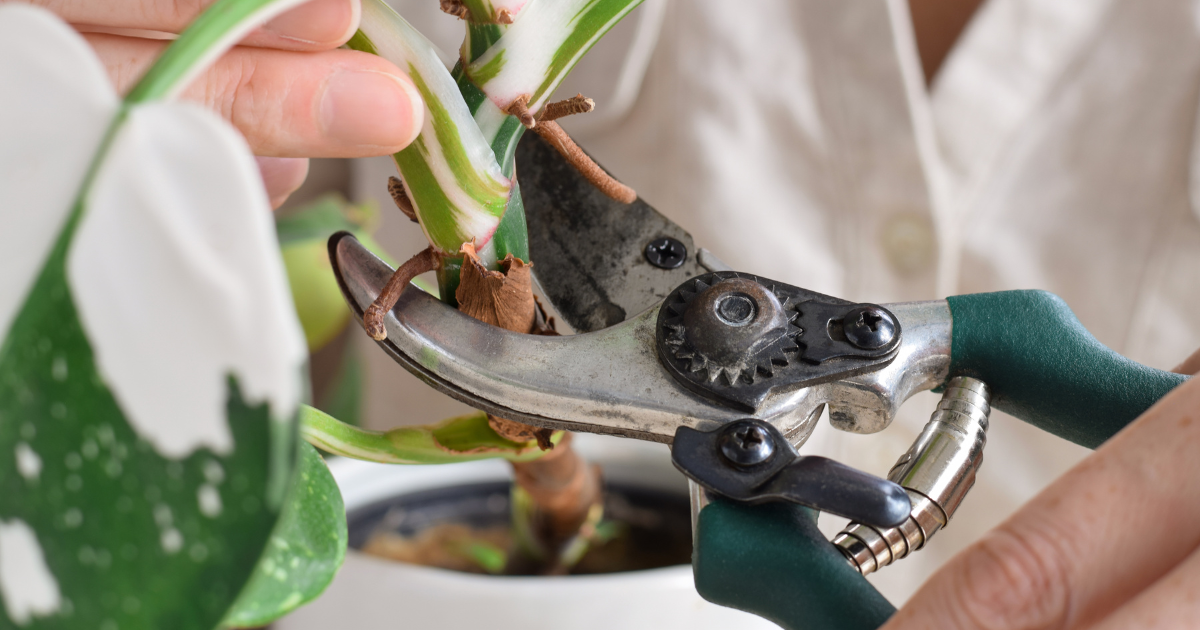How to Propagate Philodendron: A Simple Guide
Philodendrons, with their lush, green foliage, have always been a popular choice among plant enthusiasts. Their ability to adapt and thrive in various conditions makes them ideal houseplants. If you've ever wondered how to propagate philodendron, this guide is for you. Whether you're a seasoned gardener or a budding plant parent, propagating philodendrons is a rewarding experience that allows you to multiply your beloved plants and share them with friends and family.
Understanding Philodendron Propagation
Philodendron propagation can be achieved through several methods, with stem cuttings in water or soil being the most common and effective. The process involves selecting a healthy stem from the mother plant, preparing it properly, and then nurturing it until it forms new roots and, eventually, new growth. This simple guide will walk you through the steps to successfully propagate your philodendron, ensuring a thriving new plant.
Selecting the Right Cutting

The first step in successful philodendron propagation is selecting a healthy stem from the mother plant. A robust cutting is the cornerstone of healthy new growth. Ideal cuttings are typically 3 to 6 inches long, featuring at least one node (the point on the stem where leaves and roots can grow) and a couple of leaves to support photosynthesis. The vitality of the parent plant and the cutting’s health are paramount; only disease-free stems, without any signs of pest infestation, and showing vigorous growth, should be chosen. This careful selection ensures the cutting has the best chance of thriving in its new environment.
Preparing for Propagation
Once a suitable cutting has been identified, the next steps involve preparing it for rooting. This entails creating the right conditions for the cutting to develop roots. The cut should be made with clean, sharp tools to avoid infecting the plant. A clean cut just below a node increases the cutting's ability to absorb water and nutrients, significantly enhancing the rooting process. Removing lower leaves prevents potential rot and directs the plant's energy towards root development, while leaving a few leaves on top ensures the plant can continue to photosynthesize.
Rooting Methods: Soil vs. Water
Rooting Philodendrons in Soil

Rooting in soil is a traditional method that aligns closely with the natural growth habits of philodendrons. This method involves planting the stem cutting directly into the soil, where it develops roots and eventually grows into a new plant.
Advantages
Natural Transition: Since philodendrons naturally grow in soil, this method allows for a seamless transition from propagation to mature growth without the need to acclimate the plant from water to soil.
Direct Growth: Cuttings rooted in soil can often establish a stronger root system more quickly since they are in their eventual growth medium from the start.
Maintenance: Soil-rooted cuttings generally require less day-to-day maintenance once established, as the soil helps regulate moisture levels around the roots.
Considerations
Monitoring: It's more challenging to monitor root development and health since the roots are not visible.
Disease Management: There's a potential risk of soil-borne diseases affecting the cutting. Using sterile potting mix and clean containers can mitigate this risk.
Rooting Philodendrons in Water
Water propagation has gained popularity for its simplicity and the ability to monitor root development visually. This method involves placing the stem cutting in a container of water until roots form, after which the plant can be transferred to soil.
Advantages
Visual Monitoring: One of the most satisfying aspects of water propagation is watching the roots develop, allowing for immediate intervention if problems arise.
Simplicity: For beginners, water propagation can be less intimidating. It requires minimal equipment — just a container and water.
Flexibility: It's easier to change the water to maintain a clean environment around the cutting, reducing the risk of rot and disease.
Considerations
Root Transition: Roots developed in water differ from those grown in soil; they're more fragile and adapted to take up water more easily. When transferring to soil, a period of acclimation is necessary to prevent shock.
Algae Growth: If the container receives too much light, algae can form, potentially depleting the oxygen available to the roots and leading to rot.
Nutrient Provision: In longer-term water propagation setups, the absence of nutrients usually provided by soil means you may need to add liquid fertilizer to support plant growth.
Care During the Rooting Phase
Proper care during the rooting phase is critical. For water propagation, maintaining clean water and a stable environment supports healthy root development. For soil propagation, ensuring the soil remains moist (but not waterlogged) and that the cutting is kept in bright, indirect light fosters an ideal growing condition. Temperature and humidity also play significant roles; philodendrons thrive in warm, humid environments that mimic their native tropical habitats.
Troubleshooting and Patience
Patience is vital during propagation. Roots can take several weeks to develop, and during this time, it's important to monitor the cutting for any signs of distress, such as rotting or leaf yellowing. Adjustments in care, based on the cutting's response, can significantly impact the success rate. Understanding that not every cutting will root successfully allows for a learning curve where each attempt brings new insights.
Equipment You'll Need
Before you start, gather the necessary tools to ensure a smooth propagation process:
Sharp, sanitized pruning shears or scissors
A clean glass vase or jar (for water propagation) or a pot with well-draining soil (for soil propagation)
Optional: Rooting hormone to encourage faster root development
Step-by-Step Guide on How to Propagate Philodendron
1. Choose a Healthy Stem
The first step is crucial: select a healthy stem from your philodendron. Look for strong stems, free from pests, and show no signs of disease. A good cutting should be about 3 to 6 inches long, with at least two leaves and one or two nodes (the points on the stem where leaves attach and where roots tend to grow).
2. Cut the Stem

Using your sanitized shears or scissors, make a clean cut just below a node. A 45-degree angle cut increases the surface area for rooting and helps absorb more water.
3. Prepare the Stem
Remove the lower leaves to prevent rot, leaving only a few leaves at the top to continue photosynthesis. If using, dip the cut end of the stem in rooting hormone to accelerate root growth.
4. Rooting the Cutting
You can root your philodendron cutting in water or soil:
Water: Place the stem cutting in a glass of water, ensuring the node is submerged. Change the water weekly to keep it fresh.
Soil: Plant the cutting in moist, well-draining soil, making sure the node is buried beneath the soil surface.
5. Care During Rooting
Place your cutting in a location with bright, indirect light. If in water, change it regularly to prevent stagnation. For soil cuttings, keep the soil consistently moist but not waterlogged.
6. Transplanting
Once the roots are a few inches long, you can transplant your new philodendron into a pot with fresh, well-draining soil. Continue to care for it as you would a mature philodendron, adjusting water and light as needed).
Can Philodendron Grow in Water?
Philodendrons are among the most versatile and resilient houseplants, capable of adapting to a variety of growing conditions. One of the fascinating aspects of philodendron care is their ability to grow not just in soil, but also in water—a method that not only serves as a propagation technique but can also be a permanent growing medium for these plants. This adaptability speaks volumes about the philodendron's hardiness and the plant care practices that enable such flexibility.
Growing Philodendron in Water: The Essentials
Philodendrons can indeed grow in water, and this method has gained popularity among plant enthusiasts for its simplicity and the aesthetic appeal of root systems developing visibly in clear containers. This practice is rooted in hydroponics, where plants receive nutrients directly from water instead of soil. For philodendrons, water growth can be both a temporary state for propagation purposes or a long-term growing method.
Transitioning to Water
Transitioning a philodendron from soil to water requires careful consideration to prevent shock and stress. The process involves gently removing the plant from its soil, cleaning the roots thoroughly to remove all traces of soil, and then placing the plant in a water-filled container. The key is to use room temperature water and to change it regularly to prevent bacterial growth and ensure the plant receives enough oxygen.
Nutrient Needs
While philodendrons can thrive in water, their nutrient needs must be addressed since they won't have access to the nutrients found in soil. Liquid hydroponic fertilizers or liquid houseplant fertilizers diluted to a quarter of their recommended strength can provide the necessary nutrients. It's important to add nutrients sparingly to prevent root burn and to refresh the water and nutrients every few weeks to maintain optimal growth conditions.
Light and Environment

Like their soil-grown counterparts, water-grown philodendrons require bright, indirect light to flourish. Direct sunlight can lead to algae growth in the water, while too little light can weaken the plant. Maintaining a stable environment with consistent temperatures and avoiding drafts or sudden temperature changes will support healthy growth.
Monitoring and Maintenance
Regular monitoring is crucial for water-grown philodendrons. Observing the root system's development, the clarity of the water, and the plant's overall health can help preemptively address any issues. Algae growth, a common challenge in water culture, can be mitigated by using opaque containers or by placing clear containers in areas with less direct light.
Troubleshooting Common Propagation Issues
When propagating philodendrons or any houseplants, encountering issues like rotting cuttings, leaf yellowing, or leggy growth is not uncommon. These problems can often be addressed with careful adjustments to your care routine, ensuring the healthy development of your propagated plants.
Rooting Cuttings
Rotting is typically a sign of excessive moisture and poor air circulation around the cutting, especially prevalent in soil propagation methods. For soil propagation, ensure your potting mix is well-draining and avoid compacting the soil, which can suffocate roots. Consider adding perlite or vermiculite to improve drainage. Overwatering is a common culprit; allow the top inch of soil to dry out between waterings to prevent rot.
In water propagation, stagnant water can lead to bacterial growth, which attacks the cutting’s base, leading to rot. Changing the water regularly, about once a week, ensures a fresh, oxygen-rich environment for the roots. Using containers that allow good air flow around the cutting can also help prevent bacterial growth.
Leaf Yellowing
Yellowing leaves during propagation can indicate several issues, but a lack of nutrients is a common cause, especially in water propagation where the cutting has limited access to food. Once roots have formed, introducing a diluted liquid fertilizer can provide the essential nutrients needed for healthy growth. Choose a balanced fertilizer and use it at a quarter of the recommended strength to avoid over-fertilization, which can harm the delicate new roots. In soil propagation, ensuring your potting mix is rich in organic matter can help provide a slow-release source of nutrients to support leaf health.
Leggy or Sparse Growth
Leggy growth, characterized by stretched thin stems with sparse leaves, often results from inadequate light. Philodendrons need bright, indirect light to thrive; insufficient light prompts them to "reach" towards the light source, resulting in leggy growth. If you notice leggy growth, gradually move your plant to a brighter location, being mindful to avoid direct sunlight, which can scorch the leaves.
In some cases, leggy growth might also indicate nutrient-poor soil. Repotting your plant into a richer soil mix can help. Look for a mix designed for indoor plants, which should be light and fluffy, allowing roots to breathe and grow freely, while providing a balance of nutrients. For plants propagated in water and experiencing leggy growth, transitioning them to soil after roots have developed or ensuring they are receiving enough nutrients through the water can help promote fuller growth.
Fern's Leafy Learnings
Embrace the world of easy-care houseplants to bring life and color to your home with minimal effort.
Propagating philodendrons is a straightforward process that involves taking stem cuttings from a healthy mother plant.
Both water and soil propagation methods are effective, with stem cuttings requiring a node to develop roots.
Key to successful propagation includes using clean, sharp tools for cutting, choosing healthy stems, and ensuring proper care during the rooting phase.
Troubleshooting common issues such as rotting cuttings, leaf yellowing, and leggy growth can ensure the health and vigor of new plants.
With patience and proper care, propagated philodendrons can grow into healthy, full plants, adding to your indoor garden's diversity and beauty.
Deepen Your Roots with Flora
At Flora, we not only bring you a vibrant selection of locally sourced, rare, and delightful plants, but we also serve as your continuous guide in your plant parenting voyage, ensuring every leaf in your sanctuary thrives. With our Flora Pod™ technology and a nurturing community of over 250,000 plant lovers, we cultivate a space where every plant parent - novice or expert - can blossom.
We propagate with a commitment to sustainability, connection, and ceaseless growth, fostering a community where each member, and their plants, are cherished and nurtured.
Crave a lush, thriving green space? Adopt a plant from Flora today!
Flora Pod™ is featured on Shark Tank!

Shop Plants
Top 10 Most Popular Roses
Mar 22, 2022
How to Care for China Roses
Mar 11, 2022
How to Care for Chinese Money Plants
May 15, 2020
How to Grow and Care for A Bird of Paradise
Apr 26, 2020
Top 10 Plants To Grow In A Terrarium
May 31, 2022
How to Grow and Care for Lucky Bamboo
Mar 29, 2022
How to Grow and Care for Corn Plants
Mar 29, 2022
How to Care for Madagascar Dragon Trees
Mar 21, 2022













